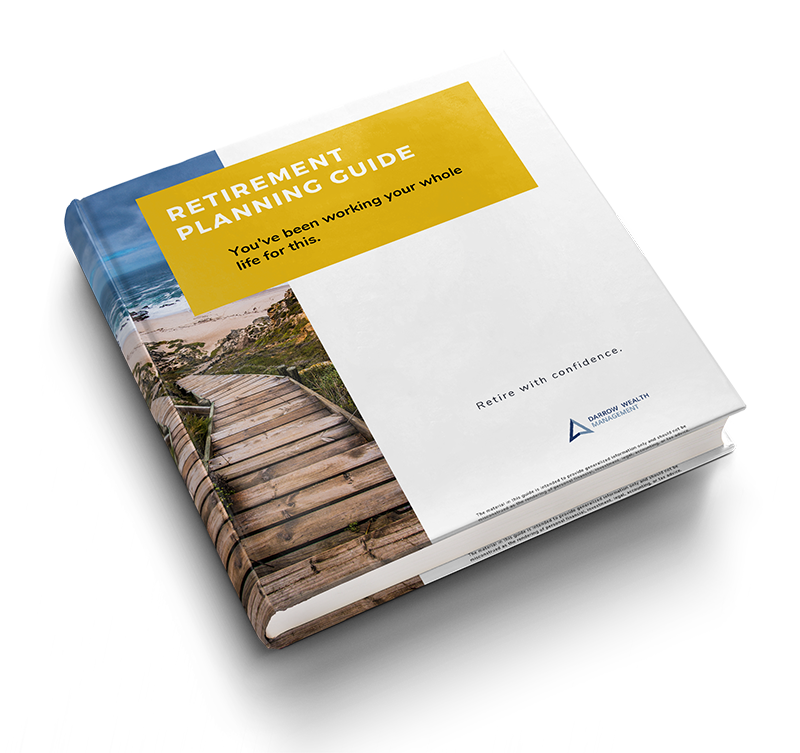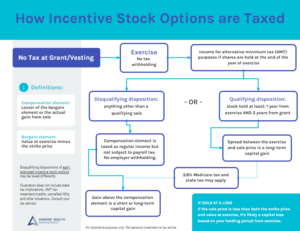Although the 401(k) retirement plan is more common, many Americans have access to a similar employer-sponsored retirement plan called a 403(b) plan. 403(b) plans are generally used for nonprofit companies or organizations, certain hospitals, public schools, state colleges and universities, and some government organizations.
403(b) plan basics
403(b) retirement plans are mostly funded by the employee-participants. Employers may contribute to participants’ accounts in the form of discretionary contributions, matching contributions, or mandatory contributions.
Since 403(b) plans may be considered “employee benefit plans” and subject to ERISA if they offer employer contributions, some organizations opt not to provide this additional benefit. When a plan is subject to ERISA, there is far more plan administration required, including annual testing and filing.
Investment choices in 403(b) plans are limited compared to 401(k) plans. Investment options in 403(b) plans are limited to annuities and mutual funds.
Tax treatment of 403(b) contributions
In the vast majority of situations, employees elect to defer a percentage of their income on a pre-tax basis. Those additions then grow tax-deferred until retirement.
Some plans may choose to offer a Roth component, where instead of making before-tax contributions, employees fund a designated Roth account within their 403(b) with after-tax dollars. Employees may generally choose to make both pre-tax and after-tax contributions to a 403(b); however annual contribution limits will apply to aggregate additions made across both accounts.
Unlike a Roth IRA, which has income limitations excluding high earners from participating, there are no such restrictions on a Roth 403(b) accounts. Employer contributions (if any) will always be applied to the pre-tax account.
403(b) contribution limits and catch-up contributions
Employee-participants under age 50 may defer up to $19,500 in 2021. The maximum combined annual total contribution for both employees and employers is $58,000. This limit does not include either type of catch-up contribution, explained below.
403(b) plans may offer two different types of catch up contributions. For employees older than age 50, an additional $6,500 catch-up contribution may be made in 2021.
15-year catch-up contribution
The second type of catch-up contribution applies to employees with over 15 years of service employed with educational organizations, hospitals, health and welfare service agencies, or church-related organizations.
This type of catch-up contribution is particularly burdensome for employees and employers to calculate and maintain good records for, so many plans have been removing this provision from their plans. At a high level, you may be eligible if all of the following are correct:
- You have been with your employer for 15 years or more
- Your average annual contribution was less than $5,000 per year with the employer
- You have not already contributed more than $15,000 under the 15-year election
Assuming the above provisions are accurate, then you may be able to contribute up to $3,000 extra per year, with a $15,000 lifetime maximum.
If you are 50 or older, you first need to calculate your special 15-year catch-up contribution before you may apply the more simplistic over age 50 catch-up contribution. So in 2021, if you’re over age 50 and also permitted to make a catch-up contribution under the 15-year rule, the first $3,000 of the additional $6,500 contribution will be applied to the 15-year lifetime maximum.
403(b) versus 401(k)
If you are accustomed to using a 401(k) plan, you may have some questions if you change jobs and your new employer uses a 403(b) plan. Although the 401(k) and 403(b) retirement plans are very similar, there are some key differences, which are explained in more detail in an infographic at the end of this article.
For many investors, there are two main ways their 403(b) may be less advantageous compared to a 401(k) plan. First, employers using a 403(b) plan may wish to avoid the annual testing and filing requirements associated with ERISA, and therefore may choose not to contribute to participants’ accounts.
Second, 401(k) plans may provide employees with a variety of investment options the plan deems acceptable. This often includes low-cost ETFs in addition to mutual funds. 403(b) plans only permit investments in annuities and actively managed mutual funds, which typically have much higher operating expenses compared to ETFs.
How much should you contribute to a 403(b)?
The best way to build wealth over the long term is through a commitment to saving and investing. Starting to contribute to a 403(b) plan early on in life can really make the biggest difference. Over time, funds invested in a traditional 403(b) will grow tax-deferred, and investors will significantly benefit from compounding, which is when you generate investment earnings from your previous investment earnings. The result for the early-saver is often a larger account balance – with fewer dollars contributed – compared to their late-start counterparts.
Related: 403(b) Match Mistakes
High earners should try to max out their annual additions
If you are financially able to max out your annual 403(b) contributions, you should. Typically, it is best to spread your contributions out evenly throughout the year due to the benefits of dollar cost averaging. Since the market goes up and down each day and is impossible to try and predict, dollar cost averaging helps to smooth out the volatility in what a fixed dollar amount can buy. Some weeks you will be able to buy more shares for your dollar contribution than others, as the market fluctuates.
Keep in mind, even if you max out annual contributions, it may still not be enough to provide the lifestyle you want in retirement. Consider investing outside of your retirement plan with a brokerage account.
Choosing an asset allocation
As mentioned earlier, 403(b) plans limit the investment options to mutual funds and annuities.
Investors just starting out may want to consider using a target date fund to begin with. Target date mutual funds are set to your retirement date and include a mix of stocks and bonds. You don’t need to rebalance target date funds and the asset allocation will automatically become more conservative as you move closer to retirement.
Perhaps the biggest downside of actively managed mutual funds (which include target date funds) is that they have very high expense ratios. The expense ratio is the annual fee charged to shareholders to cover operating, administrative, and other costs, reflected as a percentage of assets. The fee is paid out of the mutual funds’ assets before a net return can be distributed to shareholders.
So for example, if a fund returned an 8% gross return for the year and also had an expense ratio of 1.50%, the net return to investors would be 6.5%. Depending on the objective of the mutual fund, expense ratios typically fall between 1% – 1.50%, perhaps lower if the fund is tracking an index. In contrast, exchange traded funds (or ETFs) may have expense ratios well under half of that, particularly for passively managed index funds, which can dip below .1%.
Once you have grown your 403(b) a bit more it may be advantageous to do some fund research and select an asset allocation based on your options. You will want to consider a number of elements, such as a fund’s rating, asset class, objective, historical track record, expense ratio, and suitability for your investment objective. The goal is to balance risk with reward while considering costs. The importance of being well diversified cannot be over-emphasized.
Developing your asset allocation is a critical part of your overall retirement planning strategy. Consider whether it may make sense to consider working with a fee-only financial advisor to develop a unified financial strategy.
How to manage your 403(b)
Once your asset allocation is set up, you will need to check your investment mix every six months or so as the options in your plan may have changed or your original asset allocation may have shifted from your target, requiring you to rebalance. When you rebalance your 403(b), you sell a portion of the funds which have grown faster than other asset classes in your portfolio, and use the proceeds to buy more of the funds that are being underrepresented.
Here’s a very simple example of how this works: if your initial asset allocation was 80% stocks and 20% bonds, in six months your account may have drifted to be 90% stocks and only 10% bonds, which exposes you to much more market risk. To rebalance, you would sell a portion of your equity shares and buy more bonds, so the asset allocation reverts to the target 80/20 mix. Managing your own investments does take time, so be sure to weigh the benefits of doing it yourself versus working with an advisor.
Contributing to a 403(b) may not be enough for retirement
For many investors, particularly those who got a late start saving for retirement, annual contributions to a workplace retirement plan won’t be enough to fund their current lifestyle into retirement.
How can you tell if your 403(b) will be enough for retirement? The best way is to work with a financial advisor to develop a comprehensive financial model. Although doing an in-depth model is the best way to tell with a high degree of certainty, there are some common indicators that a well-funded 403(b) plan may be enough for your nest egg.
How much you need saved for retirement is ultimately driven by spending, so investors with low-to-moderate spending habits or who live in places where the cost of living is low may have lower asset requirements.
Other factors that may indicate your 403(b) plan assets are sufficient: your employer contributes a significant amount to your account each year to help get you closer to the maximum annual additions limit, you have outside sources of income in retirement (e.g. you run a business, have access to funds held in a trust for your benefit, or receive rental income). Although far less common these days, having a pension may greatly improve your ability to retire with only retirement savings in a 403(b).
Where to save after maxing out your 403(b)
For many investors, savings in a 403(b) plan alone may not fund their desired retirement. One of the best ways to boost retirement savings after you’ve maxed out your 403(b) is through a brokerage account. Particularly for individuals with a 403(b) plan, a brokerage account can offer access to the entire universe of investment options. Since high-cost mutual funds erode your investment returns, diversifying into other types of investments with more favorable cost structures can really pay off big over time.
There are no annual caps on contributions to a brokerage account and you may decide to sell your positions and use the funds at any time, for any reason, without penalty. Unlike a tax-deferred 403(b) plan, you will pay taxes on dividends and capital gains each year with a brokerage account. Using a brokerage account is one of the best ways savers can build wealth and achieve financial independence.
What to do with your 403(b) when you change jobs
When you leave your job, you generally have four options for your old 403(b) plan:
- Roll the 403(b) plan over to a traditional IRA
- Convert the 403(b) to a Roth IRA
- Roll the funds over into your new employer’s 403(b) or 401(k) plan
- Leave the plan where it is, at your old employer
403(b) to IRA rollover
The most common option is to roll an old 403(b) into an IRA. With an IRA rollover, there are no tax consequences to you and you’re able to expand your investment options as you’re no longer limited to the fund lineup consisting exclusively of mutual funds and annuities. An IRA rollover also allows you to consolidate your accounts at one financial institution and take advantage of a holistic wealth management strategy from your advisor.
Roth conversion
High earners are excluded from contributing to a Roth IRA. However, anyone is allowed to make one Roth conversion per year, regardless of how much they earn. When you convert a 403(b) to a Roth IRA, the value of the account when you convert will be included in your taxable income the year you convert.
Afterwards, the investments will grow tax-free. There are a number of features of a Roth IRA which are unique and valuable; but you will need to weigh the benefits with the costs. It typically does not make sense to convert to a Roth if you plan to pay the taxes out of your retirement account. Also, if only a small chunk of your retirement assets are in Roth accounts, it may not provide a meaningful benefit. To learn more about Roth conversion considerations, click here.
Roll the funds from your old 403(b) into your new 403(b) or 401(k) plan
The central benefit of rolling the funds from your old retirement plan into your new plan is usually the added simplicity of consolidation at one custodian or account. When evaluating a rollover from one plan into another, first determine whether your new qualified retirement plan allows rollovers into the plan.
Then, take a look at the investment options available to you in your new plan, as every employer will have their own fund lineup. Due to the limitations on investment choices in 403(b) plans, it may make sense to consider the expanded investment options that would be available to you in a traditional IRA, versus another 403(b) plan.
If you have a designated Roth account within your old 403(b), it can only e rolled into a Roth IRA or another designated Roth account with your new employer.
Keep multiple 403(b)s or consolidate?
The last option is to keep your old 403(b) with your previous employer. If your account is small, perhaps $5,000 or less, your old company may not permit you to do this. Keeping your old 403(b) where it is may be advisable if you want to retire and wish to use funds from your 403(b) before age 59 1/2 (since 403(b) plans permit you to take withdrawals at age 55 without the 10% early withdrawal penalty that applies to IRAs).
Another consideration for keeping your old plan where it is opposed to your option options is creditor protection. If you are participating in an “ERISA-Qualified” 403(b) and have taken a new job with a company who does not offer this type of plan, it may be advantageous to keep the plan where it is or roll it over into a separate IRA account to preserve the creditor protection of the qualified plan.
Assets in “ERISA-Qualified” retirement plans (like 401(k) and some 403(b) plans) are excluded from an individual’s bankruptcy estate without limitation. But remember, not all 403(b) plans are subject to ERISA. Learn more about asset protection strategies for 403(b) rollovers and also consider working with an attorney to ensure you understand your options and protections under the plan and beyond.
If growing and protecting your retirement savings is a priority for you, consider the benefits of working with a trusted advisor. To learn more about Darrow Wealth Management and what we can do for you and your family, contact us today.











